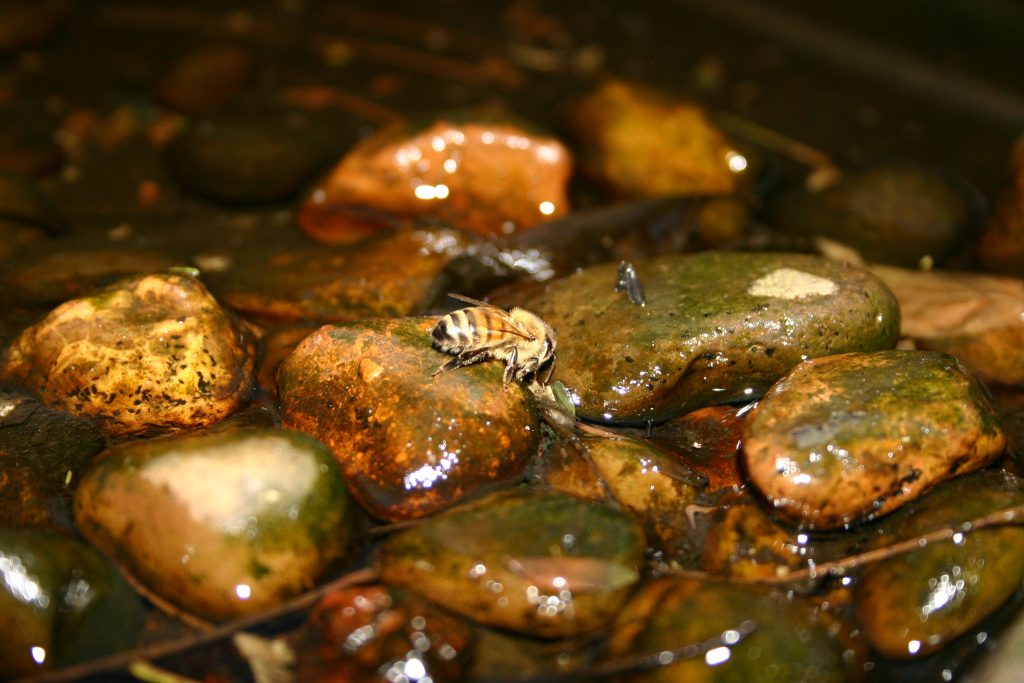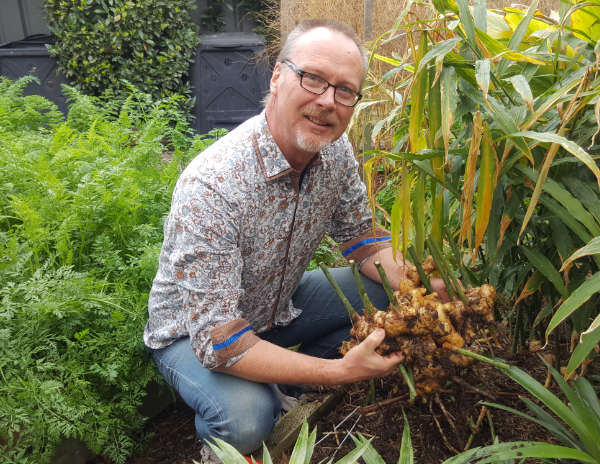Most of us have been watching the sad fate of the European Honeybee population in and around Newcastle due to the recent varroa mite infestation. This has prompted me to consider various pollination requirements and methods for my Spring/Summer crops in the veggie garden as we are in the middle of the eradication zone.

Many things won’t be affected at all. I have listed below, a table of my Spring/Summer crop options and indicated the type of pollination they require. Further explanation for each type of pollination is further explained later in this blog with links to videos to demonstrate various methods.
Pollination by Crop
See the below table which will detail each of my Spring/Summer crops and their method of pollination:
| Crop | Not applicable- Roots/Leaves | Manual Pollination | Wind Pollination | Insect/Bird or Self pollinated Pollination |
| Basil | N/A | |||
| Beans | Insect/Bird/Self | |||
| Beetroot | N/A | |||
| Broad beans | Insect/Bird/Self | |||
| Broccoli | N/A | |||
| Capsicum | Wind | |||
| Carrots | N/A | |||
| Chilies | Wind | |||
| Chinese cabbage | N/A | |||
| Citrus | Insect/Bird/Self | |||
| Coriander | N/A | |||
| Cucumber | manual if required | Insect/Self | ||
| Edamame | Insect/Self | |||
| Eggplant | Wind | |||
| Figs | N/A | |||
| Garlic | N/A | |||
| Ginger | N/A | |||
| Kale | N/A | |||
| Leek | N/A | |||
| Lettuce | N/A | |||
| Parsley | N/A | |||
| Potatoes | N/A | |||
| Pumpkin | Manual | |||
| Radish | N/A | |||
| Rhubarb | N/A | |||
| Rocket | N/A | |||
| Melons | Manual | |||
| Silverbeet | N/A | |||
| Snow peas | Insect/Self | |||
| Spaghetti squash | Manual | |||
| Spinach | N/A | |||
| Spring onion | N/A | |||
| Strawberry | Insect | |||
| Sweet potato | N/A | |||
| Sweetcorn | Wind | |||
| Tomatoes | Wind | |||
| Tromboncino | Manual | |||
| Turmeric | N/A | |||
| Zucchini | Manual |
1. Some Things Don't Need Pollination (Roots/Leaves)
It’s true – crops of leafy greens such as lettuce, spinach, silverbeet and kale – I don’t want them to pollinate because I only want to eat the leaves. By the time a seed and flower stalk starts to grow, the crop is over and I’ll be pulling it out for the next planting. No pollination required!
Crops of root vegetable – carrots, parsnips, beetroot, sweet potato, potato, etc – these crops don’t need pollinators either (unless I’m after seeds, which I’m not). So these are easy!
Seeds develop on a plant once it’s flowered, fruited and died back. So if I’m only interested in eating roots and leaves, and I don’t want seeds then pollination is no issue!
There’s one or two variations to this rule, and one of them is figs. Figs don’t need pollination either, as the fruit is actually the flower (the seeds inside being immature seeds).
2. Manual Pollination
I expect that until a population of alternate insects and native bees is established, I will need to undertake manual pollination of a number of my crops. It would be great if I didn’t have to, but I am expecting to have to do it this season. Manual pollination is best carried out in the morning before the flower begins to wilt in the heat. It is certainly the most labor-intensive pollination technique and requires me to watch for the emergence of male/female flowers in certain crops. Manual pollination is easy, once you know how and what to look for. Manual pollination works with largish flowing plants – zucchini, squash, pumpkin, etc and is also a handy method in the event of too much rain which discourages insects from visiting when both male and female flowers are open at the same time. It will be a daily task because the flowers deteriorate rapidly for these crops.
Here's a 51 second video on how I do this for zucchinis, but any type of squash is exactly the same – pumpkin, butternut, mini squash, spaghetti squash, etc. Just remember that instead of looking for a mini zucchini on the female flower, you’re looking for a mini squash, or mini pumpkins, or mini-whatever!
In the pictures below, there is (Left - Female squash flower; Middle - Male zucchini flower; Right - Pollinated Female Squash flower).



3. Wind Pollination
Certain crops are wind pollinated. This includes tomatoes and sweetcorn – two of my significant Spring/Summer crops. But to take advantage of the wind, they require certain planting conditions:
- Tomatoes – I often help a cluster of flowers along by a simple finger-flick (see this 28 second video how easy this is) but the wind will do the job, if I forget.
- Sweetcorn – I ensure that my crops are all the same variety (cross-pollination results in corn that is very starchy in taste and definitely unsweet corn!) and always plant in a block. See this video which explains how pollen drops from the flowering plant onto the silks below, pollinating the plant. This is caused by wind, even though bees are attracted to the flowers (this video was taken before the varroa mite infestation).
4. Insect/Bird Pollination
European Honeybees are an introduced insect which have dominated the pollination stage over the years. But Australia has an army of native pollinators that can do the job if we can attract them – birds, native bees, wasps and flies. These guys are good for plants which have small flowers – herbs, citrus, strawberries, blueberries, figs, snow peas, broad beans, beans… you get the idea. Things that will attract these guys include:
- Leaving herbs growing to set seed and flower, attracting native pollinators. Coriander and Basil are the two crops I will be leaving to flower this season.
- Consider building a Native Bee hotel. I will put one in hoping I get some visitors drop by to lay some eggs.
- Planting flowering plants in pots or nearby - Salvias, Marigolds, Sage, Dill, Queens Anne Lace. I may even try some pre-prepared assorted seed like a Good Bug Mix.
- I use a piece of cut citrus to attract honeyeater birds to my patch who will then explore flowering plants, looking for nectar
- Avoiding using insect sprays. There is a risk that as the pests are eliminated the good insects that will be pollinating your veggies will also be eradicated.
Looking for more help?
Find out more about our services including garden advice, setup and design. Available within a 50km radius of Newcastle.
